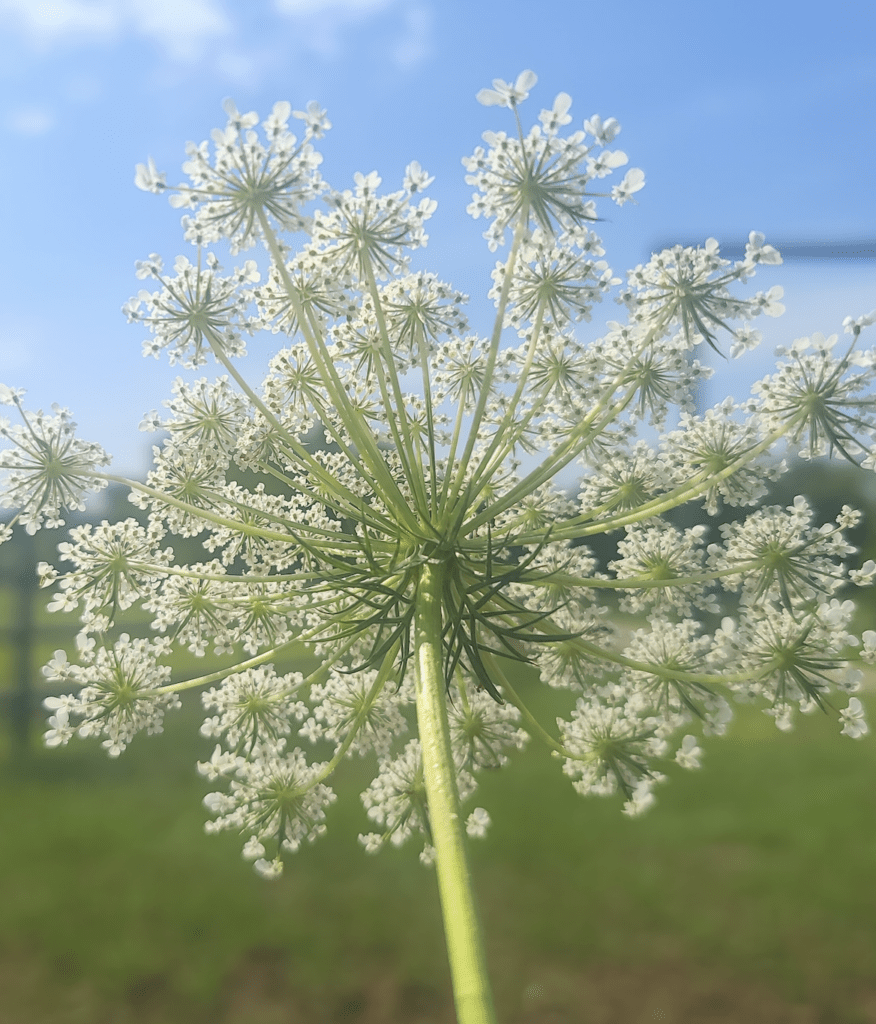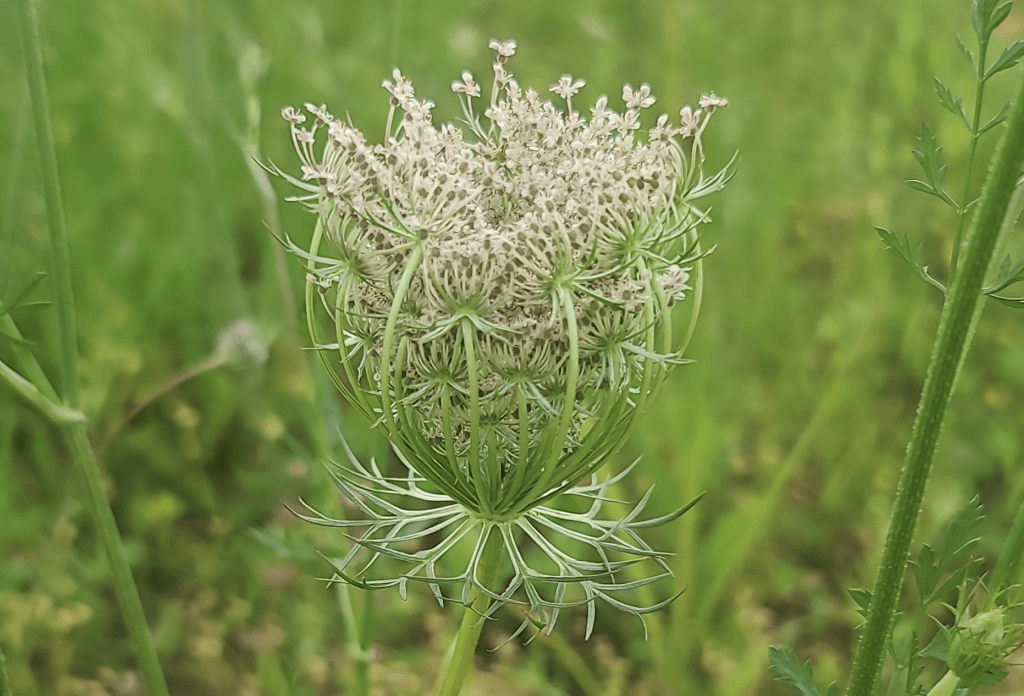Queen Anne’s Lace, scientifically known as Daucus carota or Wild Carrot, is a biennial flowering plant belonging to the Apiaceae family. It is native to Europe and Western Asia but has naturalized in many parts of North America. Queen Anne’s Lace is known for its delicate, lacy white flowers and fern-like foliage.


Queen Anne’s Lace, scientifically known as Daucus carota or Wild Carrot, is a biennial flowering plant belonging to the Apiaceae family. It is native to Europe and Western Asia but has naturalized in many parts of North America. Queen Anne’s Lace is known for its delicate, lacy white flowers and fern-like foliage.
Historically, Queen Anne’s Lace has a rich folklore and historical significance. The plant is named after Queen Anne of England, who was an expert lace maker. According to legends, a drop of Queen Anne’s blood fell on a piece of lace she was working on, thus creating the dark purple flower found in the center of the plant. Queen Anne’s Lace has also been associated with fertility, birth control, and medicinal properties throughout history.
Fun facts about Queen Anne’s Lace include that its flower clusters fold up in the evening and open again in the morning, hence its alternate name “Wild Carrot” because it resembles a carrot plant. The plant is also attractive to a variety of pollinators, including bees, butterflies, and beneficial insects.
To grow and harvest Queen Anne’s Lace from seeds, you will need the following materials: well-draining soil, a pot or garden bed, Queen Anne’s Lace seeds, water, and gardening gloves (optional).
Here are the steps to grow and harvest Queen Anne’s Lace:
Soil preparation: Queen Anne’s Lace grows best in well-draining soil. Prepare the soil by removing any weeds or rocks and loosen it to a depth of a few inches.
Sow the seeds: Scatter the Queen Anne’s Lace seeds on the soil surface and gently press them into the soil, as they require light to germinate. Alternatively, you can sow them in rows, spacing them about 6-12 inches apart.
Watering: Keep the soil consistently moist but avoid overwatering, as it can lead to fungal diseases. Water the seeds gently and regularly until they establish.
Sunlight and temperature: Queen Anne’s Lace thrives in full sun but can tolerate partial shade. It prefers moderate temperatures and can withstand some drought conditions.
Maintenance: Thin out the seedlings once they reach a few inches in height, leaving about 6-12 inches of space between each plant. This allows adequate airflow and reduces competition for nutrients.
Harvesting: Queen Anne’s Lace flowers can be harvested when fully open and at their peak. Cut the flowers at the base of their stems using clean gardening shears.
Precautions to take with Queen Anne’s Lace include wearing gardening gloves while handling the plant, as its leaves and stems may cause skin irritation in some individuals. It’s also important to note that Queen Anne’s Lace is similar in appearance to the highly toxic Poison Hemlock (Conium maculatum), so proper identification is crucial before harvesting or consuming any parts of the plant.
Queen Anne’s Lace has both decorative and practical uses. In gardens and floral arrangements, the delicate white flowers add an airy, wildflower charm. The dried flower heads can also be used in crafts and potpourri.
Medicinally, Queen Anne’s Lace has been used in traditional herbal medicine for various purposes. The root has been historically used as a diuretic and digestive aid. Additionally, the seeds have been utilized as a contraceptive, although their efficacy and safety have not been well-studied or established.
It’s important to exercise caution when using Queen Anne’s Lace for medicinal purposes, as the plant contains potentially toxic compounds. Always consult with a qualified healthcare professional or herbalist before using any wild plants for medicinal purposes.